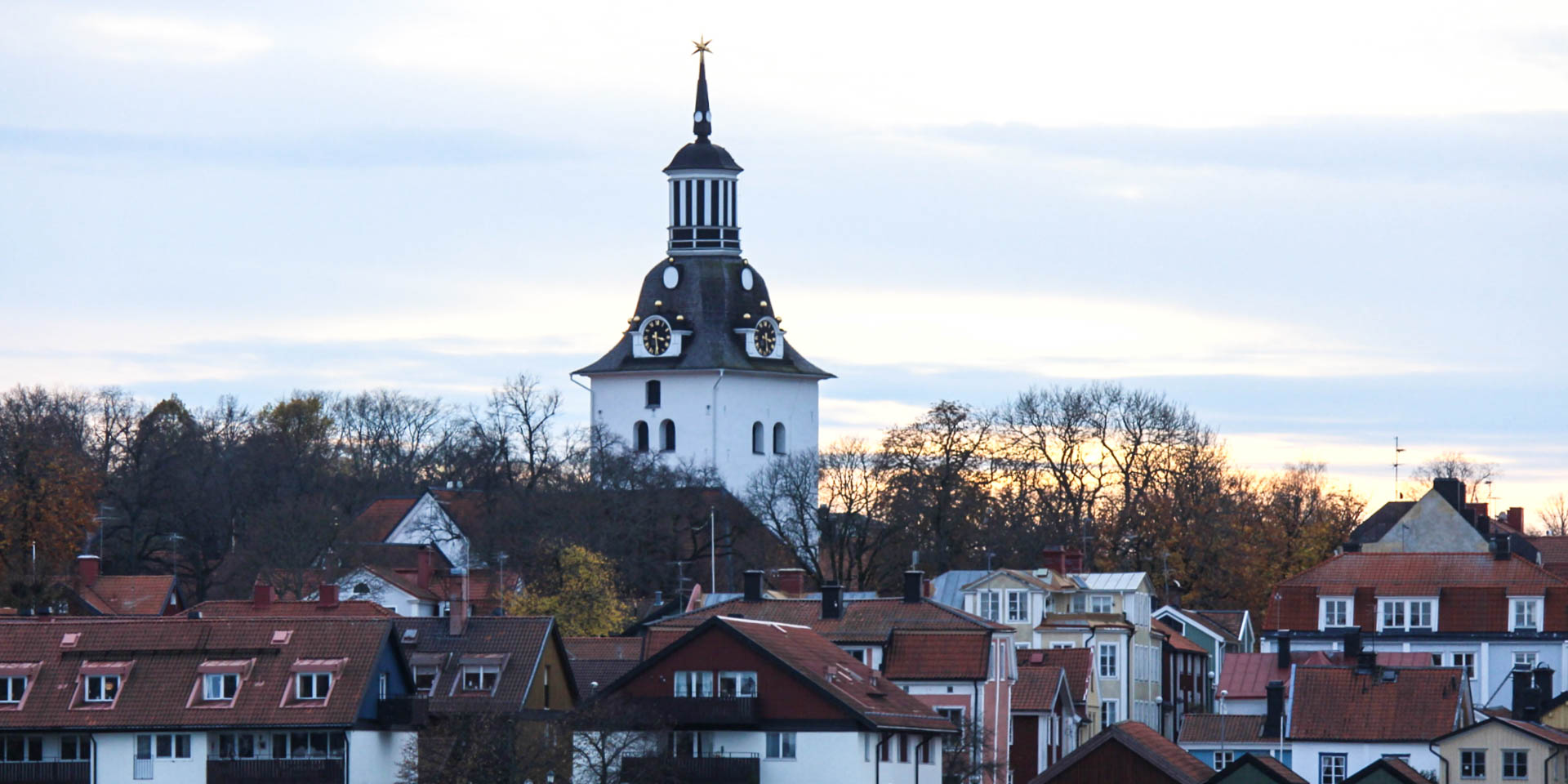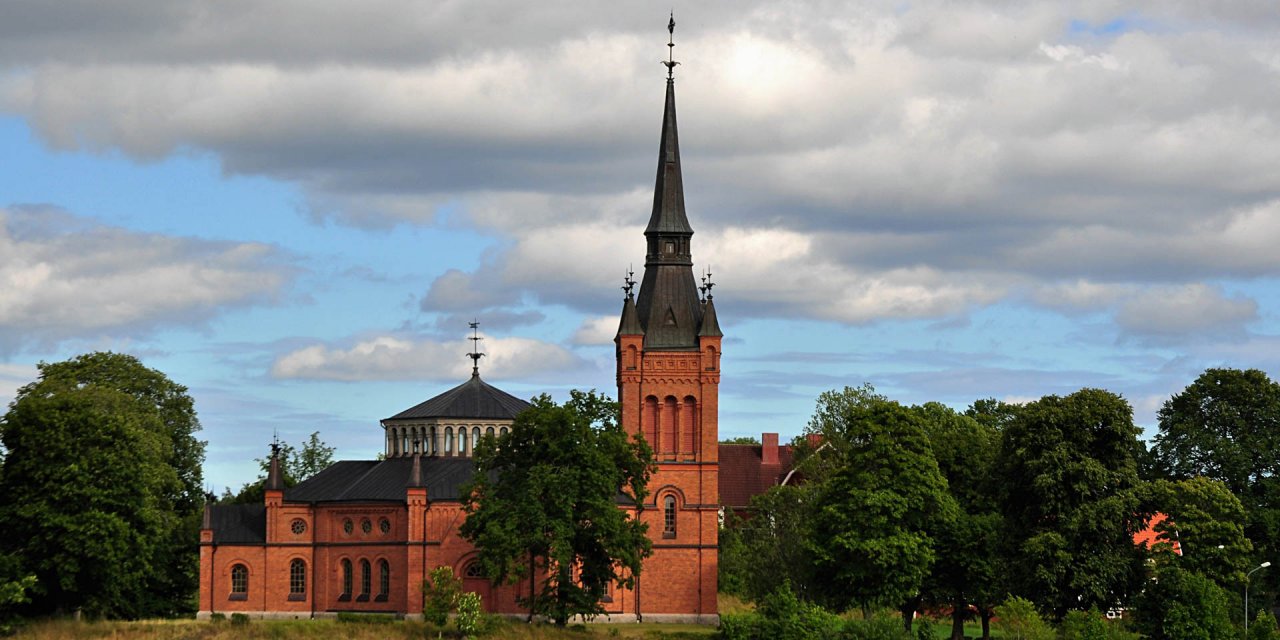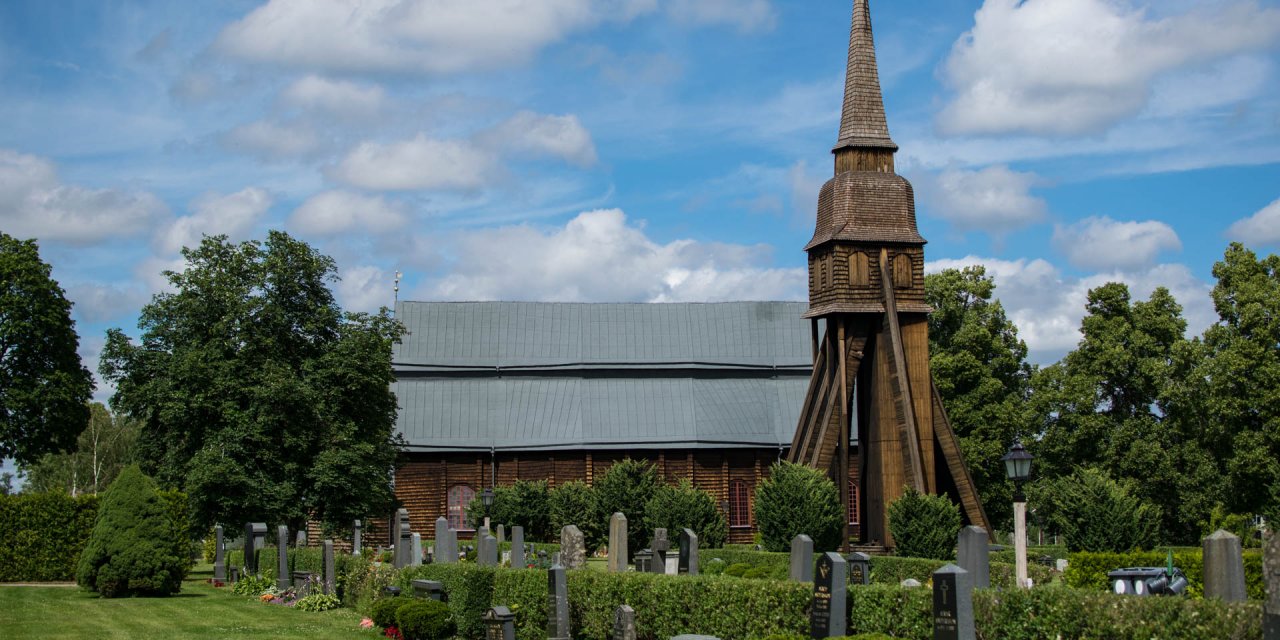

S:ta Gertruds Kyrka
Medieval church in Västervik
The construction of the S:ta Gertruds Kyrka in the city center of Västervik began in 1433 almost at the same time as the relocation of the old Västervik, today know as Gamleby, to the coast.
Around 1450, the S:ta Gertruds Kyrka, which at first consisted only of the nave with choir and a sacristy, was completed. In order to raise the funds for the construction of the church, the residents of the city had been liberated for four years from the tax.
The historical development of the church in the following 200 years is a bit in the fog of history. During this time, it came several times to damage and looting in the context of military events and also to renovations inside the church. The complete documentation begins only with the construction of the first church tower in 1670, which at that time had a slender high spire. In the course of the extension, the rocky surface came to light and as proof that the church is not built on sand, you sit since then in one of the pews with your feet on the bare rock.
The church in the 18th century
In 1677, when the city and the Stegeholm Castle was completely destroyed by a Danish attack, the church remained miraculously intact. After this last destruction, Västervik began to grow rapidly and in 1730 the church was extended by the northern transept. The bricks from the castle ruins were used as a building material. About 25 years later, the southern transept was added.
In 1762, the top of the bell tower was destroyed by a lightning strike and replaced in 1780 by the present tower helmet with the big lantern. The lightning strike also severely damaged the organ dating back to 1743, a work by the famous organ builder Jonas Wistenius. After initially provisional repair, it was restored in 1788 by Pehr Schiörlin, a student of Wistenius, and is now one of the most valuable organs in Scandinavia.
Profanation and renewed consecration
If it was up to the will of the bishop of Linköping, the church would have been demolished in 1805. Instead, the S:ta Gertrudes Kyrka was used as church until the consecration of the newly built S:ta Petri Kyrka in 1905 and as a granary after the profanation. For the 500th anniversary of Västervik in 1933, the S:ta Gertruds Kyrka was renovated and re-consecrated.
Due to the changeful history of the church, there are no medieval objects except of the baptismal font. The most valuable object, apart from the well-known Wisenius organ, is the altarpiece, which was created around 1700. The current pulpit in Baroque style was acquired in 1743, while the old pulpit was sold to the Frödinge Kyrka in the municipality Vimmerby where it is still in use. The pews date back to 1748 and still partially bear the names of the families who used to rent their favorite benches.



